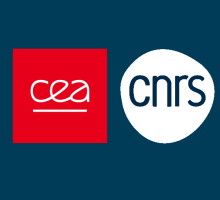DETECTION OF METALLIC POLLUTANTS IN WATER BY CAPTÔT
EXECUTIVE SUMMARY
Coming from fundamental research, CAPTÔT technology presents today a unique analytical tool, rapid and ultra-sensitive for on-site detection of toxic metallic ions in drinkable, natural and marine waters. Based on electrochemical detection, the redox signature allows the accurate determination of dissolved ions in 2min30. A dedicate software and/or application render easy the use of CAPTÔT for any end-user through a computer, tablet or smartphone.
On-site and real-time diagnostic of pollutants responds to an important societal demand which is inscribed in a double context, the environment and health responsiveness. It specially addresses OMS and EU recommendations under « water management » directory. EU directives notably state tolerable thresholds of these pollutants in waters. CAPTÔT aims to propose, for industrials and consumers, a survey of the quality of their waters which is affordable, simple of use, accurate and sufficiently precise to ensure that metals content respects regulatory thresholds.
TECHNOLOGY/KNOW-HOW
The Irradiated Solid Laboratory (LSI), UMR CEA-École Polytechnique-CNRS (UMR n°7642) have developed deep-tech competences and knowledges in irradiation processes in solid materials which have permitted the development of these peculiar sensors. Since a decade, LSI is developing the CAPTÔT technology. The electrochemical sensors of heavy-metals in solution are mainly composed of functionalized nanoporous polymer membranes. To fabricate these membranes, the first step is to irradiate polymer thin film using Swift Heavy-Ions (SHI) irradiation at GANIL (France). The passage of accelerated ions through the matter leads to straight zones of damages, named latent tracks, in the material. After chemical revealing of these latent tracks (process known as « track-etching »), a well-defined nanostructuration composed of a statistical array of cylindrical straight nanopores of 50 nm diameters and a density of typically 1010 or 109 nanopores.cm-2 is formed. The chemical functionalization inside the nanopores is subsequently done by radiation-induced grafting thanks to remaining radical defects created during SHI irradiation. This process comes from historical know-how of LSI combining ion-matter interaction and electrochemistry. These membranes are able to trap numerous metals by complexation with the radio-grafted chemical fonctions localized inside their nanoporosity. Densities are chosen following established protocols for kind of ion to detect. The resulting sensor allows an ultra-sensitive electrochemical detection of 13 ions at pbb level, with a limit of detection well-below heavy metals thresholds mandatory for industrial wastewaters. The detection can be mono- or multi-ions. The technology is not limited to the already detected 13 ions and can be adapted to detect others if required, notably among ions of interest for nuclear plants (U, Pu, Th…).
CAPTÔT technology is protected by a portfolio of 3 patents (CEA-École Polytechnique-CNRS: EP08305237, EP11305112, CEA-CNRS-Hacettepe Üniversitesi Tanitim Ofisi: EP11306648.4). New patents will come soon.
Contact us:
Marie-Claude Clochard Nous contacter
Travis Wade Nous contacter


